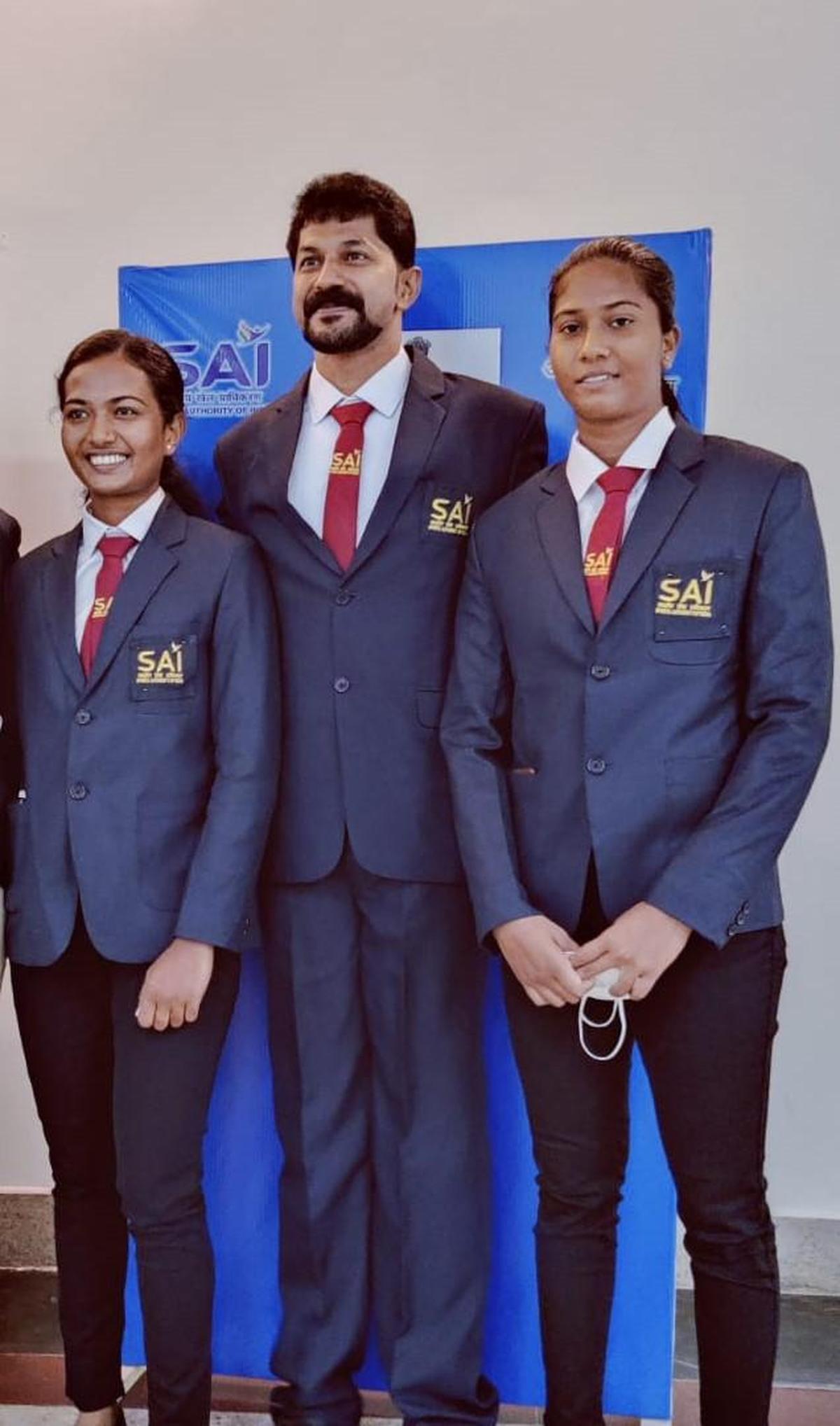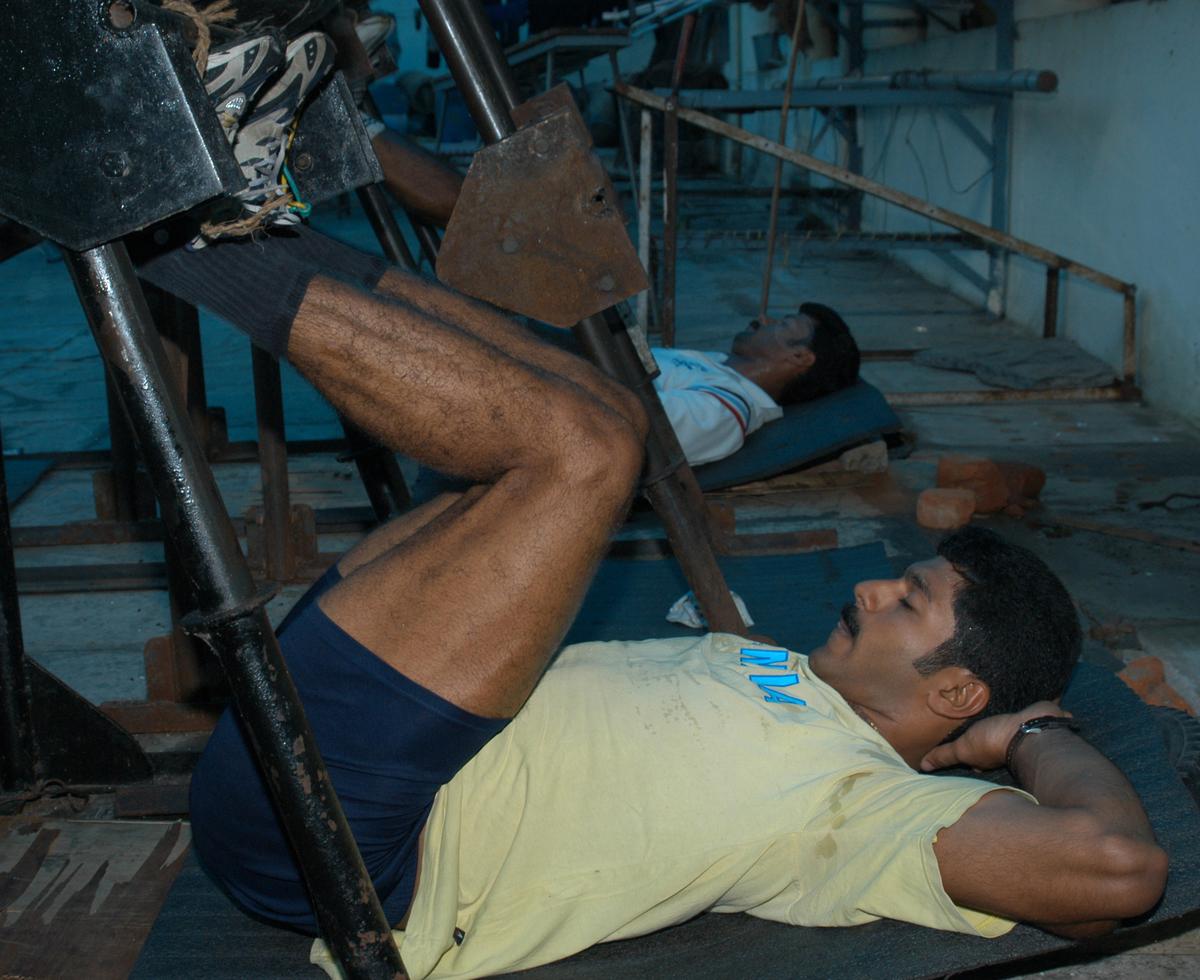Kerala rower P. T. Paulose cracked the Olympic code in 2004.
Four others have followed in his footsteps in men’s singles sculls—the latest being Balraj Panwar in Paris 2024—but Paulose will always remain the first rower from India to have set foot on that sacred flight to the Summer Games.
Athens 2004 was India’s best-ever finish in the Olympics since Moscow 1980, with Major Rajyavardhan Singh Rathore winning the silver medal in men’s double trap, but the gentle giant from Kannur remembers the quadrennial event for an entirely different reason.
“ Main dara hua thha.” The Hindi words come laced with a thick Malayali accent.
That was the second time on Friday that the 48-year-old was talking about being scared. The first time was when he sat for the interaction with Sportstar.
“I was alone in Athens. Now we have improved so much that it has become common for athletes from our country to be at the Olympics. The exposure is also there. I used to get stressed by merely looking at the foreigners in my time. These days you play four competitions outside and that scare is gone. You can strategise against someone the more you play against them, and know what they are going to do. The guy who won gold raced beside me at the Olympics (Norway’s Olaf Tufte). I was so starstruck. The Belarusian girls were taller than me, and I was 6’2”,” he said.
Paulose is currently the chief coach of rowing with the Sports Authority of India. And it doesn’t take a visit to 221B, Baker Street, to deduce that he loves his job. He is like a big brother to most of the athletes — calm and composed in the face of a storm but fun otherwise. The way he explained the nitty-gritties of the sport to the uninitiated spoke volumes about his patience.
“A light player’s resting heart rate can come down to 46. Elite players can go down to this level. Mine is 52. The ergometer (an indoor rowing simulator which measures a rower’s work-rate in ergs) monitor shows how your heart rate is fluctuating once you are strapped in. There are specific programmes curated to come to terms with the fluctuating heart rate and [attain] better endurance levels. You get to know an individual’s capacity by knowing the heart rate,” he said, replying to a query about the fluctuating pulse of an athlete while rowing.
ALSO READ | From Down Under to the Abode of Clouds: How one man’s love story led a canoeing revolution in India
Apparently, while rowing in sultry conditions, it is common for a rower to develop shortness of breath after a reduced supply of oxygen to the brain. There were at least four athletes who collapsed at the Khelo India Water Sports Festival in Srinagar on Friday. The dehydration was such that an athlete from Maharashtra couldn’t recollect her name when the doctor enquired. Her pulse was around the 180s-per-minute mark. The normal resting heart rate for adults ranges from 60-100 beats per minute.
“Non-stop movement in a boat is the most crucial aspect of this sport. They use a minimum of 240 strokes. And once you start, there is no looking back or stopping. You can’t even lose momentum… It has happened to all of us. Every rower goes through this episode. She will be fine in a few hours,” Paulose said.
So, what is the kind of training that goes behind developing athletes with such extreme levels of endurance? The answer was simpler than expected. “In water sports, for kayaking and canoeing, a lot of concentration is dedicated to upper-body strength. In rowing, legs, core and lower body are what you aim for because you have to push back with each stroke.“

P. T. Paulose with his wards Meenakshy V. S. and Aswathy P. B. at SAI NCoE-Alleppey.
| Photo Credit:
SPECIAL ARRANGEMENT
P. T. Paulose with his wards Meenakshy V. S. and Aswathy P. B. at SAI NCoE-Alleppey.
| Photo Credit:
SPECIAL ARRANGEMENT
The conversation soon veers to the state of rowing in India. Paulose feels that more training centres need to come up to accommodate the growing interest in the sport.
“We have to increase training centres. There are only 1000-1500 rowers in India. For now, in India, we have two NcoEs (National Centres of Excellence) for rowing in Odisha and Alleppey. There are two STCs (SAI Training Centres) in Port Blair and Bilaspur. These four centres belong to SAI. The rest in other states have limited accessibility.
“There are kids who are very talented, but there is a dearth of opportunities. If we have to set a target of doing well in the Olympics in 2036, which India may host, we have to work on increasing training centres now. The cream of talent is placed between the age group of 25-30. Every federation right now should have a junior team that can play a second-string side.”
The Army and JSW have stepped up in this regard. “The Army has consistently been recruiting talent and training most of the boys. The girls are being recruited and trained in JSW’s camp in Hussain Sagar, Telangana, for the past two months. I am hopeful the girls will also medal at the Asian Games this time,” Paulose said.
Pratima Puhan and Pramila Prava Minz are the only Indian women to have finished on the rowing podium in the Asiad when they won the bronze medal in women’s coxless pair in Guangzhou 15 years ago.
While Paulose claims there is no dearth of talent, he acknowledges that the costs involved may be an impediment. “The problem is that the sport is expensive. The boat is costly. It becomes difficult for the middle class to afford a sport like this.” The SAI trainees are presently using Concept2 oars, which are USA-made. They cost a lakh INR each. A single boat costs around INR 17 lakh, while a double boat costs INR 28 lakh.

Paulose (bottom), the chief rowing coach with the Sports Authority of India, feels that more training centres need to come up to accommodate the growing interest in the sport.
| Photo Credit:
K. GAJENDRAN/ The Hindu
Paulose (bottom), the chief rowing coach with the Sports Authority of India, feels that more training centres need to come up to accommodate the growing interest in the sport.
| Photo Credit:
K. GAJENDRAN/ The Hindu
Paulose says, “Things are very advanced now, both technique and equipment-wise. We see certain strategies being implemented by foreign coaches… We see, learn and give it a fresh twist that is more suited for our kids. We watch every country’s progress keenly and catch the points they are doing good in.”
Interestingly, only the coxswain doesn’t have to satisfy height cut-offs while getting onboarded at SAI. “We put a lot of stress on height while looking to onboard talent. At SAI, 168cm is what we are looking at for girls aged 13-15, for example. For boys, we have a 185cm height bar to ensure we get better stroke lengths. For a cox, we look at the weight. He should have a maximum weight of 55kg. Doesn’t matter how tall or short he is.”
One can only be hopeful that Paulose gets to crack the Olympic code again. Only this time, it is his wards who would have to do the needful.
Published on Aug 25, 2025